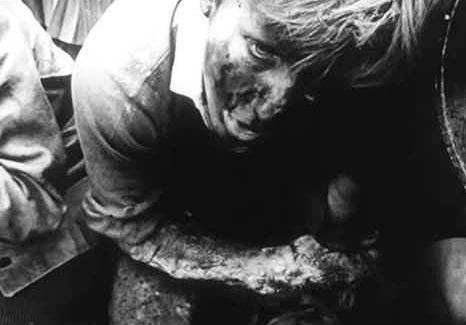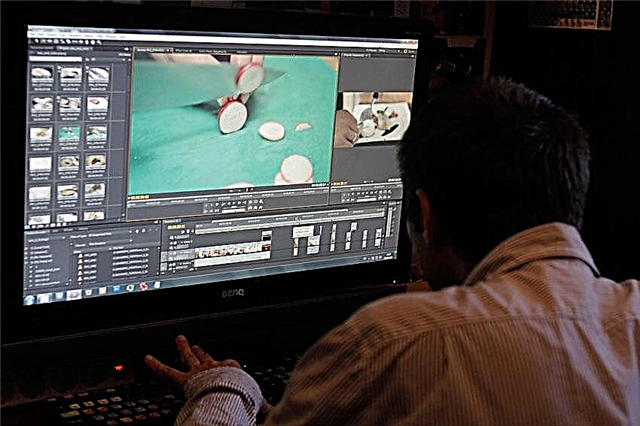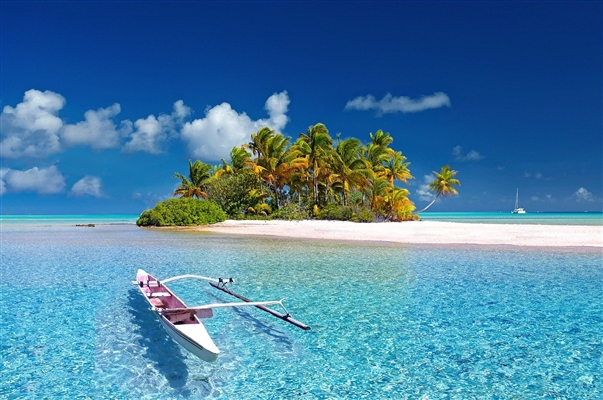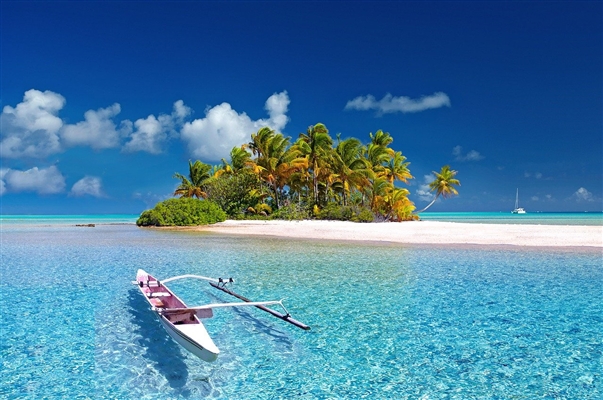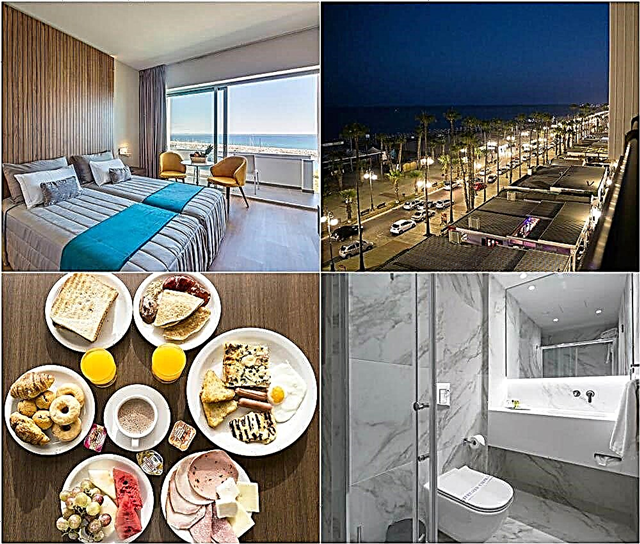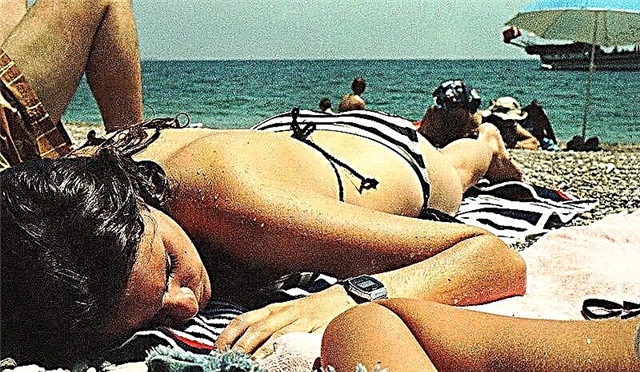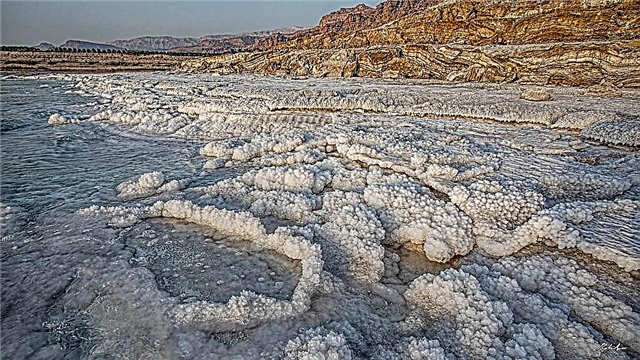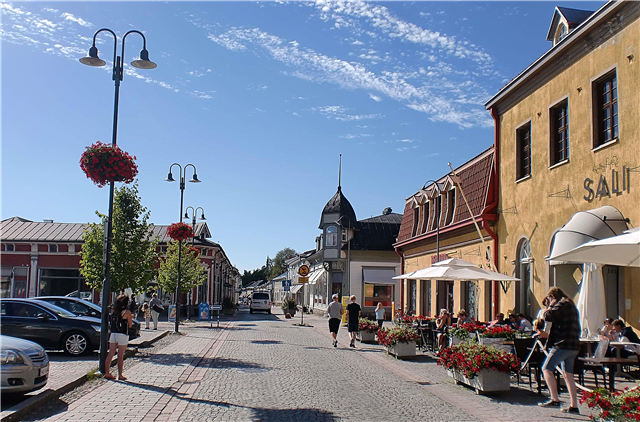The population density in Finland is low. The capital, as in most countries, is far ahead, followed by 5 cities in the region of 200 thousand inhabitants, and then a relatively even group: from 45 to 150 thousand. Regardless of these numbers, cities are developing in approximately the same way: they are trying to be self-sufficient.
Therefore, almost everywhere there is industry, conditions for trade and objects attractive for tourists. Winter sports and outdoor activities in Finland are in high esteem. Both small leisure centers in cities and full-fledged resorts have been created, for example, near Lahti or Porvoo. And in Rovaniemi they go for a fairy tale - to a meeting with Santa Claus, who, according to legend, lives in these parts.
The largest cities in Finland
List of the largest cities in terms of population in the country.
Helsinki
The capital and largest city in Finland. It regularly enters the lists of the best cities in the world. Helsinki has very clean tap water, a thousand kilometers of bike paths, and the area around Senate Square resembles St. Petersburg. Korkeasaari Zoo is one of the northernmost and largest in the world. The Seurasaari Island Museum and the Suomenlinna Fortress are open all year round. More than 300 islands are part of the capital.
Population - 650,058 people (2019).

Espoo
It is considered a satellite city of Helsinki. Espoo is home to the country's oldest theater for children and teenagers, as well as the headquarters of major Finnish companies such as Rovio Entertainment and Fortum. Sightseeing: house-estate "Glims", museum "Gallen-Kallela", Serena water park. The city won the Finnish poll for the best place to live.
Population - 284 444 people (2019).

Tampere
Located between two lakes: Näsijärvi and Pyhäjärvi. The Tammerkoski River divides the historical part of the city into two parts. The architectural landmarks of Tampere include primarily temples, including the Old Church, designed by Carl Ludwig Engel and Carlo Bassi. About 20 museums of different subjects and directions have been opened. For example, the "Museum of Mummy Trolls" based on the work of Tove Jansson.
Population - 235 615 people (2019).

Vantaa
The satellite city of the Finnish capital: to Helsinki 19 kilometers. The largest airport in the country was built here. There is an aviation museum nearby. The local history museum of the city is located next to the railway station. In 1989, the Eureka Science Museum was opened. At that time, he had no analogues in Europe. Finland's only symphony orchestra is based in Vantaa.
Population - 228 678 people (2019).
Oulu
The oldest city in Northern Finland stands at the confluence of the Oulujoki River into the Gulf of Bothnia. Cruises start from Oulu, boats can be rented for walking or fishing, and in winter there are snowmobile safaris and dog sled races. Golf lovers will appreciate the presence of a 36-hole course - the northernmost on the planet. Museums, a botanical garden, and a city theater are open all year round.
Population - 203 750 people (2019).

Turku
The main spruce of the country is planted in this city every year, therefore Turku is called "Christmas". The local port is the oldest operating in Finland. Only he can receive rail ferries. Tourists are offered sea cruises, fishing, walking and cycling excursions in the surrounding area. The cathedral is a symbol of the area along with a medieval castle, which is currently given over to a museum.
Population - 191 603 people (2019).

Jyväskylä
The translation of the name is "grain village". There are over 300 lakes here. They cover 20% of the total area of Jyväskylä. The city has a lot to do with Alvar Aalto, an architect and designer: buildings were built according to his designs, a museum operates, and the local university relies on his heritage. There is an arts festival in July, a film festival in February and a marathon in September.
Population - 141,374 people (2019).

Lahti
Sports recreation center in Finland. Golfing, mountaineering, horse riding, fishing and sailing are available all year round. The Messilä ski resort with 14 slopes and 13 lifts is located 10 kilometers from the city. In the summer, Lahti hosts the best choirs, orchestras and troupes at the Sibelius Hall. Art galleries and art museums are open, including the Soile Art Palace Yuli-Mäyürü.
Population - 120,081 people.

Kuopio
It is located in the valley of lakes, surrounded by Lake Kallavesi, so some areas of the city are located on islands. Tourists come to relax in the thermal center "Rauhalahti", as well as to admire the local beauty. More than 5 thousand cottages for the summer season have been built in the city and the surrounding area. Kupio's symbols are the numerous temples and the Puijo Tower TV.
Population - 118 667 people (2019).

Pori
The oldest jazz festival in Europe is held here. The only monument of necropolis in the country - the mausoleum of Yuzelius is located in Pori. It was commissioned by a local mountain adviser for his deceased daughter. The painting of the building by the artist Axeli Gallen-Kallela is also noteworthy. Other attractions: the Ruzenlev Museum, the Church of St. John the Evangelist, Yuyteri - a golden beach with dunes on the coast of the Gulf of Bothnia.
Population - 84 318 people (2019).

Kouvola
The city was formed thanks to the railway that connected Russia and Finland. Sightseeing: Verla Factory-Museum - a UNESCO World Heritage Site, Tykkimäki amusement park with free admission, Repovesi National Park with 40 kilometers of walking paths, Arboretum Mustila arboretum. The first monument in Kouvola was opened in 1936. It is dedicated to the country's independence.
Population - 83 149 people (2019).

Joensuu
The student city of Finland - about 15 thousand students. It is located in a picturesque place: here the Pyhäselkä lake and the mouth of the Pielisjoki river "converged". Church Street runs between the main temples of Joensuu: Evangelical Lutheran and Orthodox. Exotic lovers should look into the botanical garden with its collection of Ecuadorian and other plants unusual for this area.
Population - 76,543 people (2019).

Lappeenranta
Located near the border with Russia. Conditions have been created to attract tourists, for example, some shops operate in the Outlet format - with year-round discounts. Sightseeing: the house-museum of the merchant Ivan Volkov, the Orthodox Church of the Intercession of the Most Holy Theotokos, the Saimaa seal monument, the South Karelia Art Museum, Linnoitus Fortress.
Population - 72 661 people (2019).

Vaasa
A quarter of the city's residents speak Swedish. Its name is a reference to the Swedish royal family. Vaasa is the venue for many musical events: "Ranta Rock" gathers rockers, the best choirs of Europe come here once a year, and there are also traditional Korsholm festivals. There are art and local history museums. Boat excursions are organized around the archipelagos.
Population - 67 588 people (2019).

Hämeenlinna
Located by Lake Vanajavesi. The settlements at this place have existed since the time of the Vikings. Häme Castle has been preserved since the 13th century, when it was built for defensive purposes. In the middle of the last century, restoration was carried out, and the castle was converted into a museum complex. Fans of ecotourism should visit the park area of Aulanko. Nearby there are golf courses, tennis courts and a modern camping.
Population - 67 530 people (2019).

Seinäjoki
The city owes its foundation to a factory that produces gunpowder. The library building and the church were designed by Alvar Aalto. The winter sports center is in demand both by locals and tourists. It is worth paying attention to the railway exhibition, the local history museum, a visit to the brewery and the summer theater.During the warmer months, Seinäjoki hosts mass events such as the tango festival.
Population - 63 366 people (2019).

Rovaniemi
In 2006, a rural municipality became part of the city, which formally included it in the list of the largest cities in the world by area. Alvar Aalto's projects helped shape Rovaniemi's current identity. Sightseeing: Forest Museum, Raftinger's Candle Bridge, Arktikum Center. Tourists visit reindeer farms and many objects associated with Santa Claus, according to legend, who live in these parts.
Population - 62 945 people (2019).

Mikkeli
The city is named after the Archangel Michael. Sightseeing: the observation tower, the neo-Gothic cathedral, the Kenkävero manor museum, which once belonged to the parish priest, the camping area, which includes the wax museum. The football field is converted into a free skating rink in winter. For active recreation there is also a water park and 2 swimming pools.
Population - 53 781 people (2019).

Kotka
Large port of the Gulf of Finland. The central part of the city is spread over the island of Kotkansaari. The main Orthodox church in Kotka was built in the 19th century, and St. Nicholas Church in the 18th century. Hiking trails run through all the natural and man-made beauties of the area: protected groves, ruins of ancient fortifications, along the "wild" coast and piers. All conditions for active recreation and sports have been created.
Population - 52 899 people (2019).

Fat
The city has preserved the trading traditions of the past. Fairs are regularly held on the central square, and performances are performed on holidays and weekends in the evenings. Salo is famous for its stone churches, including Uskelan, which was erected in 1832. The old building of the locomotive depot, which celebrated its centenary, was given over to an art museum, where old and modern paintings coexist.
Population - 52 312 people (2019).

Porvoo
The second oldest city in Finland. The name comes from a Swedish fortress that stood at this place in the past. Medieval wooden buildings have been preserved along the coast. Popular museums: the house-museum of the poet Johan Runeberg, the museum of dolls, the museum of local lore. 6 kilometers from Porvoo there is a biothermal spa with mineral waters, the Haikko resort.
Population - 50 345 people (2019).

Kokkola
The city is rich in events: spring fairs, rock concerts in summer, the February dance festival. The center of Kokkola is built up with wooden buildings. There are historical and natural history museums and an art gallery nearby. The city hall owes its appearance to the famous architect Karl Ludwig Engel, whose designs decorate the Finnish capital.
Population - 47 706 people (2019).

Hyvinkää
It received the status of a city in Hyvinkää in 1961. Its history began with the opening of a tavern on the road leading to Helsinki. The capital is only 50 km from here. Sightseeing: Kutäya Manor, Railway Museum, Lutheran Church, Arttu Villa, adapted for a youth cultural center. In summer, beer and rock music lovers come to the city for a big festival.
Population - 46 537 people (2019).

Lohja
Located on the shores of Lake Lohjanjärvi. It is called "the city of a thousand apple trees". Local gardeners are the best in the whole country. The Alitalo winery is open for visiting, where the tasting of apple drinks takes place. Sightseeing: the Church of St. Lawrence, the city museum, founded over 100 years ago, the Tyutyuri mountain museum, to see which you need to go underground.
Population - 46 269 people (2019).

Rauma
It stands on the coast of the Gulf of Bothnia. Local lace has been known since the 17th century. For almost half a century, the annual lace-making festival has been held, the events of which take a week. The city center, called Old Rauma, has been protected by UNESCO since 1991 thanks to its wooden buildings and other architectural features. Museums for every taste are open: from contemporary art to industrial art.
Population - 39 382 people (2019).


